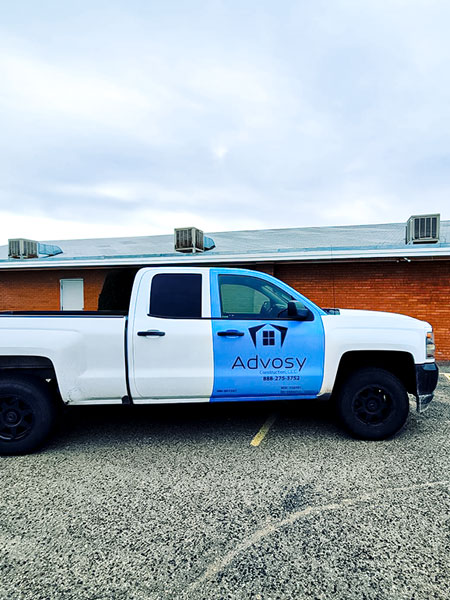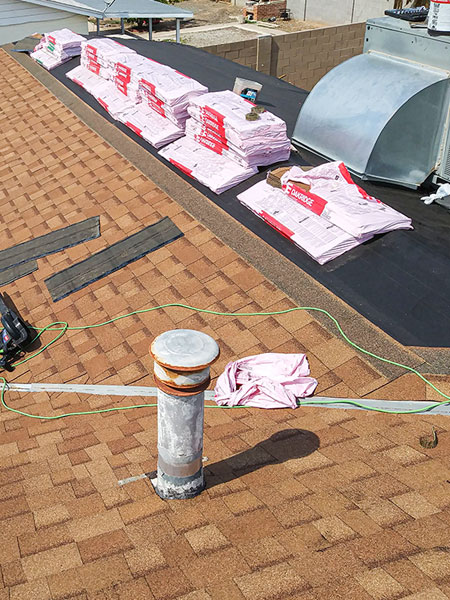Roofing materials have become increasingly varied and complex over time, offering a range of advantages and disadvantages for homeowners. Understanding the differences between these options can help to make informed decisions when selecting a roof material.
This article will explore the various types of roofing materials available as well as their respective strengths and weaknesses. It is hoped that this information will provide a better understanding of which type may be most suitable for each individual situation.
In order to determine which type of roofing material is best suited to any given application, it is important to consider factors such as:
- Durability
- Cost
- Energy efficiency
- Aesthetic appeal
- Maintenance requirements
- Lifespan
- Fire resistance
- Environmental impact
The following sections will discuss in detail the benefits and drawbacks associated with different kinds of roofs so that an informed decision can be made about which option would work best for any given house or building project.
Asphalt Shingles
Asphalt shingles are among the most popular roofing materials in North America due to their versatility and affordability. These shingles come in a wide variety of colors, textures, and styles that make them suitable for almost any project.
They can be installed quickly compared to other more complex roof systems, making them an ideal choice when time is a factor.
The main disadvantage of asphalt shingles is their shorter lifespan compared to other materials such as tile or metal roofs. In addition, they are not as durable against extreme weather conditions like hail storms or high winds.
Asphalt shingle roofing has also been known to retain heat during hot summer days which may cause the interior of your home to become uncomfortably warm.

Metal Roofs
Moving on from asphalt shingles, metal roofs are also a popular choice for many homeowners. Metal roofing is composed of various metals such as aluminum, copper or steel and can be formed into either standing-seam panels or shingle-style tiles.
In comparison to asphalt shingles, metal roofs are much more durable due to the fact that they are impervious to water damage and rot which makes them ideal for areas with extreme weather conditions like heavy snowfall or high winds. Furthermore, metal roofs come in a wide range of colors and styles which allows homeowners to customize their home’s exterior look without sacrificing durability.
However, one drawback associated with metal roofing systems is the cost; while it may not seem so initially, the installation costs add up quickly when compared to other materials like asphalt shingles. Additionally, it should be noted that during installation extra care must be taken because if installed incorrectly there could be potential issues with leaking.
It is important to note that proper ventilation should also be included in order to ensure long life expectancy of the material and reduce any chance of condensation occurring inside your home resulting in mold buildup.
In summary, metal roofing can offer great benefits but comes at a larger upfront cost than its counterparts due to the complexity of installing this type of system correctly and including necessary components such as sufficient ventilation.
Clay And Concrete Tiles
Clay and concrete tiles have been a popular choice of roofing material for centuries, with their durability and attractive designs making them ideal for both residential and commercial buildings.
Clay tiles are made from natural clay that is formed into shape before being fired in kilns, creating a strong, weatherproof tile which can last up to fifty years or more when properly maintained.
Concrete tiles on the other hand are typically composed of cement or plaster reinforced with fibreglass mesh or wire lath to provide strength and rigidity.
Both types of tiles come in a variety of styles, colours and textures that make them an aesthetically pleasing option for any building project.
When it comes to advantages, both clay and concrete tiles offer excellent protection from severe weather conditions including high winds as well as providing insulation against heat loss during cold winters; they also resist fire better than most materials due to their non-combustible nature.
On the downside however, clay tiles tend to be heavier than other materials such as asphalt shingles so extra structural support may be necessary if installing them on existing roof structures; additionally they require regular maintenance such as sealing cracks between each tile to prevent moisture penetration into the underlying structure.
Concrete tiles can also be quite heavy but usually require less maintenance than clay tiles since they don’t need periodic resealing; however they are prone to cracking over time due to temperature changes or movement of the underlying structure so repairs may be needed periodically.
Wood Shingles And Shakes
Clay and concrete tiles offer several advantages, including a long lifespan, resistance to fire and pests, and low-maintenance requirements. As with any roofing material, there are drawbacks; the installation cost of clay and concrete is higher than other materials, they can be heavy and require structural reinforcement, and they may not fit the aesthetic of some homes.
Wood shingles and shakes are an alternative option for those seeking a traditional look that stands out from the crowd. They’re relatively affordable compared to tile roofs, lightweight in comparison to their ceramic counterparts, easier to install on many buildings due to their lighter weight.
However, wood shingles are prone to rot if not properly maintained or sealed correctly which can lead to costly repairs down the line. Furthermore, wood roofs provide no protection against hail damage or wind gusts—and depending on local regulations—they may need replaced more frequently than other options such as slate or tile.
Slate And Other Natural Stone
Slate is a popular roofing material that has been used for centuries. It is one of the oldest natural stones available and its durable, waterproof nature makes it ideal for use in wet climates.
Slate can be cut into thin tiles that are easy to install on roofs and provide superior protection from water damage over time. The main advantages of slate include its longevity, low maintenance needs, and fire resistance.
However, there are some drawbacks associated with using slate as a roofing material. Firstly, slate is an expensive option compared to other materials. Additionally, because it is heavy and brittle, hiring professional installation services may be necessary due to the risk of breakage during transport or installation.
Lastly, although slate resists fire well, if exposed to high heat it can crack easily and become prone to moisture seepage which could cause significant structural damage over time.
In summary, while slate offers many benefits as a roofing material such as durability and fire resistance, these must be weighed against the cost of purchase and installation along with potential risks posed by extreme temperatures.
Synthetic Roofing Membranes
Synthetic roofing membranes, also known as single-ply roofing, are a type of flat roof covering made from synthetic materials like PVC and TPO. These membrane systems offer increased flexibility compared to traditional felt or asphalt roofing systems and can be used on both commercial and residential buildings.
The main advantages of these types of roofs are:
- They are lightweight yet strong
- Resistant to damage caused by UV exposure, water, fire, extreme temperatures and chemicals
- Quick to install with minimal disruption
- Cost-effective due to their long life expectancy (up to 30 years)
- Easy maintenance with regular inspections
- Recyclable material which is often energy efficient
- A variety of colors available for aesthetic appeal
On the other hand, some disadvantages include:
- Issues related to adhesion failure if not properly installed
- Potential punctures when exposed to sharp objects such as hail stones or branches
- Repairs may be more difficult than those required for conventional roofs since most require specialist technicians.
In summary, synthetic roof membranes provide numerous benefits in terms of strength, durability, installation timescales, and aesthetics but should be carefully considered before purchase given their specific requirements during installation and repair.

Green Roofs
The use of green roofs has become increasingly popular due to their environmental and economic benefits.
Green roofs are a type of roofing that involves the installation of vegetation on rooftops, which can range from low-maintenance ground cover to more intensive gardens. These living systems act as insulators for buildings, reduce water runoff, improve air quality, and provide habitat for wildlife. In addition, they offer aesthetic appeal with lush foliage or blooming flowers.
However, green roofs come with both advantages and disadvantages. Green roofs require an initial investment in materials and labor; however, these costs may be offset by energy savings resulting from improved insulation properties. Additionally, green roofs must be maintained regularly to ensure their effectiveness over time; this includes monitoring plants for pests or disease as well as removing debris or dead material when necessary.
The amount of maintenance required is largely dependent on the specific system chosen—more extensive gardens will need greater care than simple ground covers. Ultimately, while there are drawbacks associated with green roofs such as cost and upkeep requirements, their potential reward makes them a worthwhile consideration for many building projects.
Conclusion
In conclusion, roofing materials are an important part of any building project. There is a wide variety of options available with unique properties and features to suit the needs of each individual situation.
Asphalt shingles provide cost-effectiveness while metal roofs offer modern appeal and longevity. Clay and concrete tiles bring classic beauty and durability, while wood shingles and shakes can add rustic charm to a home or commercial setting. Slate and other natural stone create timeless elegance, synthetic membranes offer superior protection against harsh weather conditions, and green roofs can reduce energy costs while providing environmental benefits.
With so many choices available, it’s easy to find the perfect option for any structure or budget.


